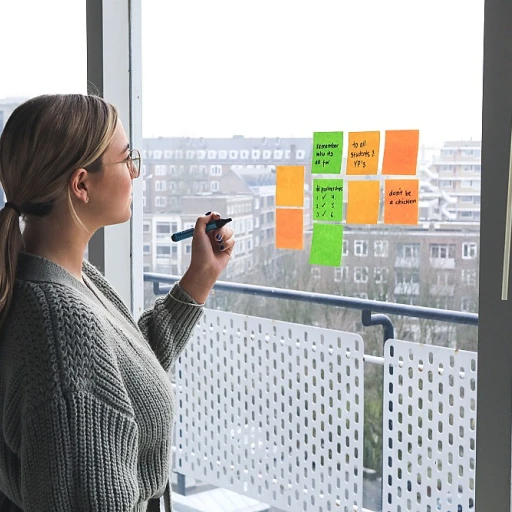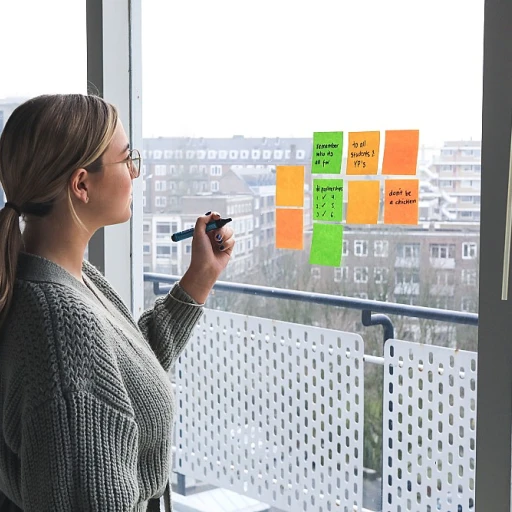
The Role of a Minimum Viable Product in HR Strategy
The Value of Testing with a Minimum Viable Product in HR
In the realm of product development, the concept of a Minimum Viable Product (MVP) plays a pivotal role, especially when it comes to refining human resources strategies. The principle behind an MVP is to build a product with just enough features to satisfy early users and provide valuable feedback for future iterations. This is particularly relevant for Chief Human Resources Officers (CHROs) who are focused on enhancing their HR frameworks with innovative approaches.
The development process of an MVP involves creating a streamlined version of a product that offers core functionalities. This approach allows HR teams to engage in user feedback while continuously refining and improving the product based on the insights gathered. The iterative process is a fundamental aspect of agile development, where the goal is to quickly test ideas in the market and adjust based on customer feedback and user experience.
With MVP development, CHROs can identify which aspects of their HR strategy are resonating with their employees and which need further refinement. This process not only accelerates the time-to-market for new HR initiatives but also ensures that the final product is closely aligned with end-user needs and expectations. By focusing on the minimum marketable product, HR teams can strategically allocate resources, prioritize features that directly impact user experience, and avoid unnecessary expenditures.
Incorporating an MVP product development approach within HR strategy empowers teams to remain agile and responsive to changing workplace dynamics. As the iteration progresses, HR leaders gain insights that are paramount for informed decision-making, bolstering their capability to implement effective and future-proof HR strategies. For more comprehensive insights into strategic planning for HR, consider exploring the strategic planning process for developing effective HR strategy.
Understanding Iteration in MVP Development
Embracing the Agile Approach
Understanding iteration in the development of a minimum viable product (MVP) is crucial for HR teams aiming to refine their strategies. In the context of product development, iteration involves a cyclical process of building, testing, and refining a product based on user feedback. This approach is rooted in agile development principles, which prioritize flexibility and responsiveness to change.
The Iterative Process in MVP Development
The iterative process begins with the development team creating a basic version of the product, the MVP. This initial version includes only the essential features needed to meet the minimum marketable requirements. The focus is on delivering a viable product that can be tested by users in real-world scenarios.
Once the MVP is released, user feedback becomes a critical component. Teams collect insights from users to understand how the product performs and what improvements are necessary. This feedback loop is integral to the iteration process, allowing teams to make informed decisions about product enhancements.
Benefits of Iteration for User Experience
By continuously refining the MVP based on customer feedback, development teams can enhance the user experience. This iterative approach ensures that the product evolves to meet the needs of its users, ultimately leading to a more successful and user-friendly product.
Moreover, iteration helps in minimizing risks associated with product development. By testing assumptions and validating features early in the process, teams can avoid costly mistakes and pivot strategies as needed. This agile MVP methodology not only saves time but also aligns the product more closely with market demands.
For more insights on leveraging iterative processes for product innovation, you can explore this resource.
Phases of Iteration in MVP for HR
Key Components of Successful MVP Iteration in HR
When focusing on the minimum viable product (MVP) within the realm of human resources, the iterative process is paramount. This developmental cycle enables teams to refine and optimize the MVP by leveraging feedback and adapting to user needs. MVP iteration is not just about repeatedly building the product until it’s perfect but involves continuous learning and agile responsiveness.
An effective MVP iteration centers around integrating user feedback and agile methodologies. By regularly testing the MVP, important insights about user experience and market demands emerge, leading to enhancements in product features. The development team should prioritize user stories to ensure that the most relevant features are developed first, aligning with the minimum marketable product.
The Iteration Phases
- Initial Development: Start by creating a basic version of the product with core features that solve specific HR problems. This phase lays the groundwork for further development, ensuring that MVP development aligns with strategic HR objectives.
- User Testing: Once the initial build is complete, expose the MVP to actual users for testing. Gathering user feedback is crucial to understanding what works and what needs improvement. This phase also helps fine-tune the user experience and ensures the product meets minimum marketable standards.
- Feedback Integration: Analyze feedback data meticulously—distinguishing between user suggestions that bring value and those that could derail the process. Prioritizing customer feedback ensures the product maintains its agile nature and remains relevant to its target market.
- Next Iteration and Feature Refinement: After integrating feedback, the development team should identify high-impact areas that require further iteration. This involves refining features and enhancing capabilities based on user interactions and market realities.
The MVP process is recursive, with each iteration providing insights that inform subsequent development stages. By adhering to the values of agile MVP development, HR teams can create robust and responsive solutions. For insights into setting pertinent goals during these iterative phases, explore the advantages of setting quarterly goals.
Benefits of Iterative MVP Phases for CHROs
Embracing the Benefits of Iterative MVP Phases for Strategic HR Advantage
In the world of HR, the iterative development of an MVP serves as more than just a fast-track to market entry; it is a fundamental tool for strategic refinement and alignment. The flexible nature of an MVP, developed through an agile process, allows HR teams to adapt swiftly to changing organizational needs and evolving market demands. By engaging in continuous iteration of the MVP, HR strategy benefits in several meaningful ways:- Enhanced User Feedback: Frequent iterations with targeted user feedback loops empower HR teams to make informed decisions. Capturing real-world user experience data on the MVP enables quick adjustments in features that are critical for meeting employee and organizational expectations.
- Agility in Development: An iterative MVP process aligns with agile development methodologies, allowing a swift responsiveness to identified shortcomings or new opportunities. HR can adapt the minimum viable offerings based on early insights, leading to a product that evolves with user needs.
- Risk Mitigation: By testing new concepts on a viable scale through MVP iterations, HR teams can identify and mitigate potential risks before full-scale deployment. This reduces both the time and cost associated with implementing new human resource initiatives across a larger workforce.
- Market and User Fit: Iterating on MVP phases ensures that the final product aligns closely with the market's needs and user stories. This iterative refinement helps maintain a strong marketable position, catering to the most crucial aspects that customers demand.
- Team Alignment and Collaboration: The iterative process necessitates close collaboration among development teams, HR strategists, and stakeholders. This creates a shared vision and collective ownership, fostering a unified approach to problem-solving and innovation.
Challenges and Solutions in MVP Iteration for HR
Overcoming Obstacles in MVP Iteration for HR
Developing a Minimum Viable Product (MVP) in the HR sector can be fraught with challenges. Understanding these hurdles and their solutions is crucial for Chief Human Resources Officers (CHROs) aiming to harness the power of iterative development. Here, we explore common challenges faced during the MVP iteration process and propose effective strategies to overcome them.
Aligning Stakeholder Expectations
One of the primary challenges in MVP development is aligning the expectations of various stakeholders. Each party, from the development team to HR managers, may have different visions of what the MVP should achieve. This can lead to conflicts and delays in the development process.
- Solution: Establish clear communication channels and regular updates to ensure all stakeholders are on the same page. Utilize user stories to convey the product's potential impact and gather feedback early in the process.
Managing User Feedback
User feedback is invaluable for refining an MVP, but it can also be overwhelming. Sifting through user suggestions to identify actionable insights is a critical part of the iteration process.
- Solution: Implement a structured feedback system to categorize and prioritize user input. Focus on feedback that aligns with your strategic goals and enhances the user experience.
Balancing Agility and Stability
Agile development methodologies emphasize flexibility, but constant changes can disrupt the development flow. Striking a balance between agility and stability is essential for successful MVP iteration.
- Solution: Define a clear iteration timeline with specific goals for each phase. This helps maintain momentum while allowing room for necessary adjustments based on customer feedback.
Ensuring Product Viability
The ultimate aim of an MVP is to create a viable product that meets market needs. However, focusing solely on minimum features can sometimes compromise the product's overall viability.
- Solution: Regularly revisit the core objectives of your MVP to ensure it remains aligned with market demands. Engage with users continuously to refine features and enhance the product's value proposition.
By addressing these challenges, CHROs can lead their teams to develop a robust and effective MVP that not only meets immediate needs but also lays the groundwork for future growth and innovation.
Case Studies: Successful MVP Iterations in HR
Real-world Examples of MVP Success in HR
Understanding MVP development in HR strategy isn't complete without exploring proven success stories. These case studies offer tangible evidence of how the iterative phases of a minimum viable product can lead to effective solutions and enhanced user experiences.- Market-Responsive Recruitment Platforms: By embracing the agile development process, HR teams have launched MVPs that address recruitment challenges head-on. For instance, a recruitment platform was developed to fill market gaps by focusing on essential features first, such as resume parsing and interview scheduling. Through continuous iteration and user feedback, the platform evolved to include advanced analytics and AI-driven matching, aligning more closely with user needs over time.
- Enhanced Employee Engagement Tools: Another successful case comes from an organization that developed a minimum viable product targeting employee engagement. The initial product included basic survey tools and feedback mechanisms. As iterations progressed, features like real-time feedback and mood tracking were integrated based on customer feedback. These agile iterations helped the product to adapt to changing market demands and user preferences.
- Performance Management Systems: An MVP focused on performance management demonstrated how agile MVP development can streamline traditional HR processes. The development team started with the minimum marketable features such as goal setting and progress tracking. Feedback from users revealed a desire for more nuanced performance metrics and personalized development paths. With subsequent iterations, the product incorporated these features, making it a robust and viable product for HR departments.












